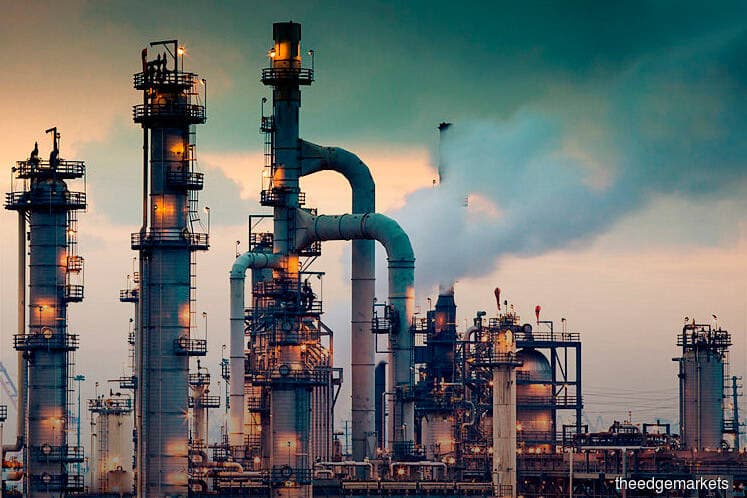
This article first appeared in The Edge Malaysia Weekly on October 7, 2019 - October 13, 2019
PETROLIAM Nasional Bhd (Petronas) is playing down a report that says it has been approached by Saudi Aramco to be one of its cornerstone investors in its upcoming mega listing.
Amid renewed interest in Saudi Aramco’s long-awaited initial public offering (IPO), Bloomberg reported last week that the state oil firm is seeking cornerstone investments from friendly sovereign funds and state-owned oil firms. Among those Aramco was said to be approaching were Petronas, Sinopec Group and China National Petroleum Corp.
Asked to comment by The Edge, Petronas said, “We have not received any offer from Saudi Aramco or its appointed representatives to become a potential cornerstone investor in the proposed IPO.”
Aramco did not respond to the report.
Depending on who is talking, Aramco’s valuation is anywhere from US$1 trillion to US$2 trillion. It plans to list 5% of the company by 2021, which would mark the biggest IPO in history. There is also talk of the Saudi oil company doubling its public float to 10%.
An invitation from Aramco would be a testament to Petronas’ standing in the industry, as cornerstone investors are usually those that can shore up confidence in the listing. But how does the investment case fit Petronas?
Project-specific investments more appealing
Petronas would be better off “utilising its funds to conduct more of its own exploration activities” and have better oversight over the geopolitical risks involved, a senior oil and gas analyst with a regional banking group tells The Edge. “It is more important to have control over the exposure and be an asset operator instead of just participating as a financial investor.”
Much of Aramco’s operations are in the Arabian Peninsula, where attacks on facilities and vessels have persisted. Just last month, Aramco’s assets suffered two drone attacks that stalled 5.4 million barrels per day — or 5% of the global output — of its production capacity.
Another analyst concurs, suggesting that it would be more prudent “if Petronas invests in specific projects”, as it did in 2018, instead of buying into the company directly.
In 2018, Petronas undertook a project-specific collaboration with Aramco when the latter acquired a 50% stake in the US$16 billion Refinery and Petrochemical Integrated Development (Rapid) project in Johor.
But cornerstone investors would have the benefit of acquiring a stake at a discount, and Petronas has participated in a similar IPO in the past.
In 2006, it acquired 1.3% in one of Russia’s largest state oil companies, Rosneft, at US$7.55 per share or US$1.1 billion. Just like Aramco, Rosneft’s listing also met with concerns about the level of control by the state and geopolitical risks.
Shares of the Russian oil firm closed at US$6.29 last Thursday — representing a decline of over 16% since Petronas’ investment. But the stock carried a 12-month trailing dividend yield of 6.35% with a growth rate of over 10% in the last 10 years. Petronas did not respond to questions about the status of its holding in Rosneft. But 13 years on, it would have a much bigger capacity to undertake similar acquisitions.
A stake in Aramco means participating in the biggest oil firm and the most profitable company in the world, which made a net profit of US$111 billion last year — close to double Apple’s bottom line — on US$315.24 billion in revenue.
According to reports, Aramco’s oil reserves stand at over 261 billion barrels.
It has also pledged US$75 billion in base annual dividends to shareholders from 2020 to 2024, and paid US$58 billion in dividends to the Saudi government in 2018.
To partly support the higher dividend, Riyadh has plans to change royalty payments and cut taxes. For now, details of the actual dividend structure are scarce. Market watchers are looking at the possibility of different dividend classes between state and public shareholders.
As Aramco plans to first list 1% of the company on the Riyadh stock exchange, this could serve as a yardstick of the kind of risk and returns that the company will provide. But timing is key as market sentiment will affect investor decisions on Aramco’s IPO.
Chairman Yassir al-Rumayyan said last month that the company is ready to undertake an IPO “any time in the next 12 months”, marking another possible delay from the end-2019 target. The company has already postponed the IPO once, in 2018, as the oil market struggled to stabilise.
When the oil price slumped to an average of US$45 per barrel in 2016, Aramco’s net profit stood at a low of US$13 billion and it paid no dividend.
“Sentiment is largely driven by the bleak economic outlook due to the ongoing US-China trade war,” says Refinitiv Asia oil research and forecast director Yaw Yan Chong. “Opec+ production cuts and falling Iranian and Venezuelan production have failed to lift prices and the drone attacks on Saudi Arabia’s oil facilities also failed to lift prices sustainably. After a jump to US$72/bbl in the immediate aftermath of the attack, prices have now fallen below the US$60/bbl level before the attack.”
But at least long-term investors still have confidence in the oil business and the company. Aramco managed to attract US$100 billion in orders for its international bond issuance of US$12 billion in April — despite carrying lower yields than Saudi government paper.
In any case, the Saudi government is determined to get the IPO up and running as it seeks funds to develop new industries and reduce its reliance on oil. Aramco does not have the luxury of time, and that is a factor that may develop into a good entry point for long-term investors.
Save by subscribing to us for your print and/or digital copy.
P/S: The Edge is also available on Apple's AppStore and Androids' Google Play.